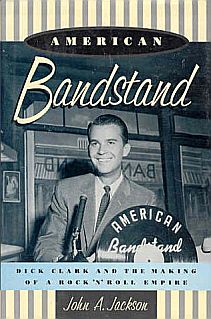Most Catholic parishes are now in a position to begin to evaluate liturgical music to use with the new Missal. There’s not much point to the process if there is no agreement on the method. In the United States, the “three-fold test” is popular to cite (liturgical, musical, pastoral) but I’ve never really seen evidence that this test is much of a test at all since there is no agreement on what each of the standards really mean.
I could say a piece fails all three and someone else could say that a piece passes all three, and then we would really find ourselves at a dead end, arguing again about what the three-fold test really means. It’s a bit like a test of food that it should taste good, look good, and be good for you. Well, yes, but I’m not sure that this helps much in deciding what to have for dinner. The test only passes the argument on to a different stage of argumentation.
In any case, it seems that many Catholic musicians are under the impression that only one test is actually necessary: people must be able pick up the melody quickly and sing it. Interestingly, that standard does not seem to enter into the discussion of a single letter or teaching from any serious authority in the history of the Catholic faith. And yet it is the one test that seems to survive.
The entire scene reminds me of the show American Bandstand that I watched when I was a young child. Every new song was evaluated on a scale of 1 to 10 and nearly everyone questioned would say the same thing: “It has a good beat and you can dance to it.” Even when I was 7 or 8 years old, I recall thinking: this is the most superficial standard I’ve ever heard. Of course, we are talking about dance music here so perhaps superficial isn’t such a bad thing. But when it comes to liturgical music, we are talking about music that reaches out of time into eternity in the act of prayer. Strangely, if anyone said anything about that test, the video makers didn’t put their words on the final cut.


If you'll excuse my shameless self-promotion, it seems relevant here to mention my own superficial critiques of some new settings of the Ordinary:
Reviews of GIA's new Mass settings
Reviews of OCP's new Mass settings.
I'd really like to see more specific critiques and reviews of new and revised settings, both from the major publishers and from some of the self-published/Creative Commons composers. I advocate for ICEL chants to start with, but eventually a lot of us are going to want to branch out, either into contemporary styles (ghast!) or other chant/polyphony/choral settings, and guidance wading through the mess would be helpful.
It is difficult to judge the responses of people in this clip, because we do not know what question they were asked. Still, the responses were mainly on an anthropocentric basis—what I like mostly, though occasionally the criterion of beauty appeared. No one spoke of any other transcendent qualities or of the appropriateness of the music to the sacred action and to the worship of God (theocentric criteria). The excerpt of the Gloria stil showed the use of the initial text a'tts a refrain, something which seems to me to interrupt the logic of the text, even now when the translation better represents that logic. I would hope that such sessions would also emphasize the fact tht the priest should e singing his part; when he does so, the music of choir and congregation takes its place in a larger whole; when he doesn't, that music seems more incidental.
Prof Mahrt addresses the issue correctly: the criteria revealed in this clip is anthropocentric. I do not think it is just the publishers who are pushing this, but they are certainly taking advantage of the widespread understanding of active participation by well intentioned ordinary folk. It is interesting that the majority age of the folks represented here is not under 30, as one can view in the Agnus Dei clip in this series. Also interesting in this series is that the melodies are mostly syllabic, one note per syllable, catering to singers of lowest abilities.
But it would be most profitable to discuss what theocentric criteria would be, as this could allow us to formulate a well defined liturgical alternative to these pretty Broadway style melodies.
Has anyone had a chance to evaluate the three settings commissioned by the CCCB?
Gabby, how are things at RPInet?
In answer to your question, not me as of yet.
Charles, things are very slow there. When they rearranged the forum in a very biased way and added a moderator for one section, many drifted away. I lurk but don't post much.
I got the three settings (Guimont, Angeles and Dawson) at the office, but I haven't heard them yet. The diocesan liturgy coordinator was in in September and did a workshop with the musicians. I was away so didn't get a chance to sit in. When I came back I got a call from the director of music asking me if they could start using the settings now, so I don't think the diocesan person did a very good job of explaining exactly what was going on with the translation.